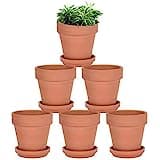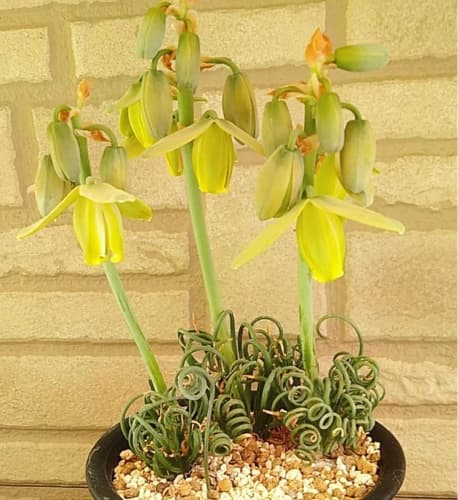My Complete Lithops Identification Guide
Posted by Grace on April 15, 2023
Over the years, after owning so many lithops, I have created a personal dictionary to identify the lithops easily. I'm sharing it with you!
Lithops can be recognized by their paired leaves, which form a cone-like body with smooth, flat, or rounded tops decorated with features such as ridges, warts, islands, wrinkles, windows, and sometimes colorful markings, as well as their flowers during the blooming season.
For each type of Lithops, I have selected four representative images along with their respective image sources. Often, one of the four images is of my own Lithops.
Just a tip: To simplify the ID process, you can search for the predominant color of your lithops on the page, which will lead you to the possible lithops species. For instance, if you search for "brown" on the page, you may come across Lithops aucampiae as a potential match.
I also updated the whole collection on my Pinterest account - Plant Succulents. You can find them there.
If you are interested in ID guides for other succulents, I also created an ID guide for conophytum, as well as an ID guide for Haworthia. Enjoy!
Need tools for succulent propagation and repotting? Here are my go-to tools: mini tool set (including syringe 💉, gloves 🧤, tweezers 🪤, dust blower 💨, tiny shovels 🛠️) and well-draining mix 🌱.Contents
- Lithops aucampiae
- Lithops lesliei
- Lithops karasmontana
- Lithops pseudotruncatella
- Lithops salicola
- Lithops helmutii
- Lithops fulviceps
- Lithops optica
- Lithops bromfieldii
- Lithops dorotheae
- Lithops otzeniana
- Lithops gracilidelineata
- Lithops villetii
- Lithops meyeri
- Lithops werneri
- Lithops divergens
- Lithops localis (Lithops terricolor)
- Lithops verruculosa (Lithops inae)
- Lithops hookeri
- Lithops coleorum
Lithops aucampiae
Visible features: Rusty brown, dark brown pattern.
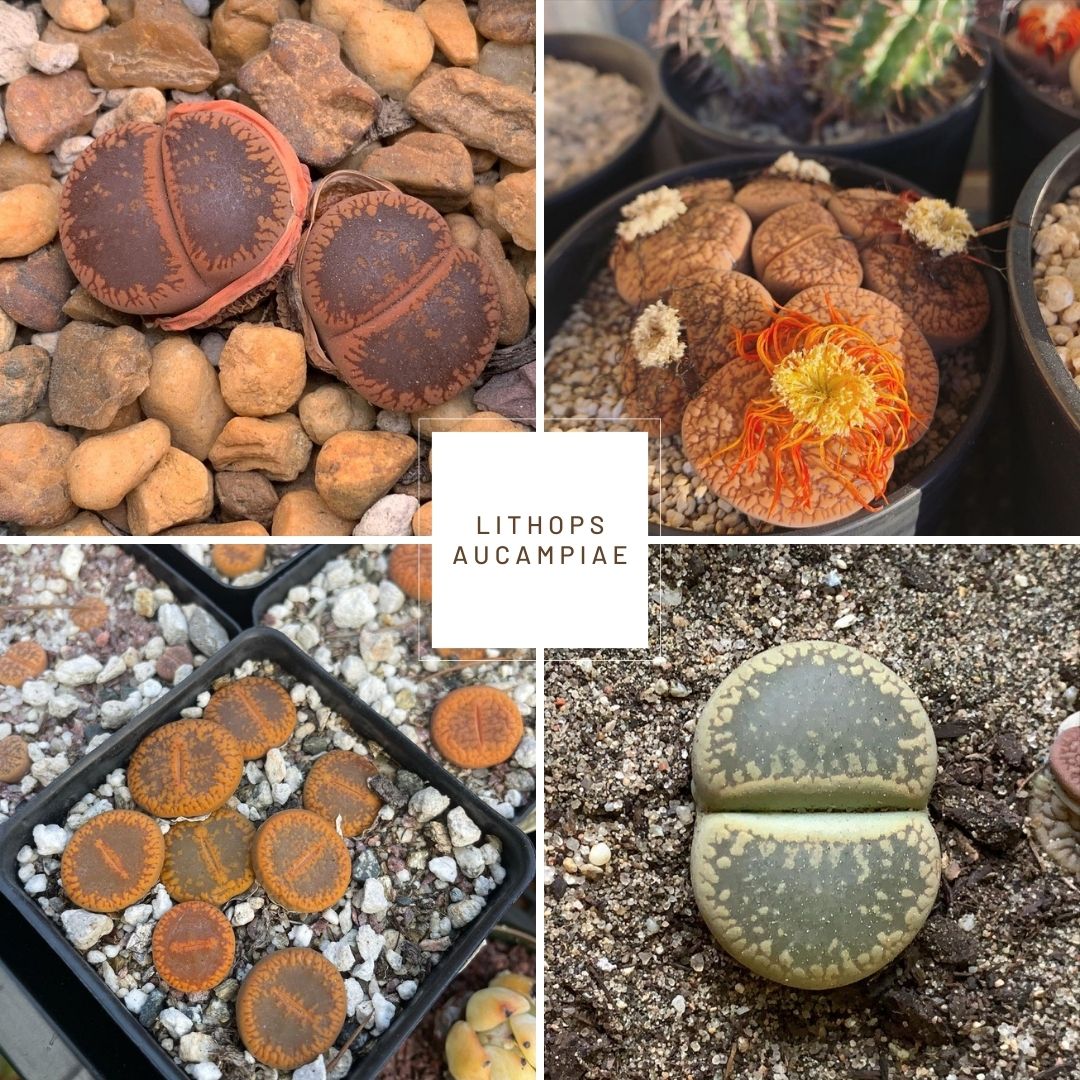
Photo Credits: [1], [2], [3], [4]
Lithops lesliei
Visible features: From pinkish gray to olive green, with greyish brown meshlike patterning. Yellow flowers.
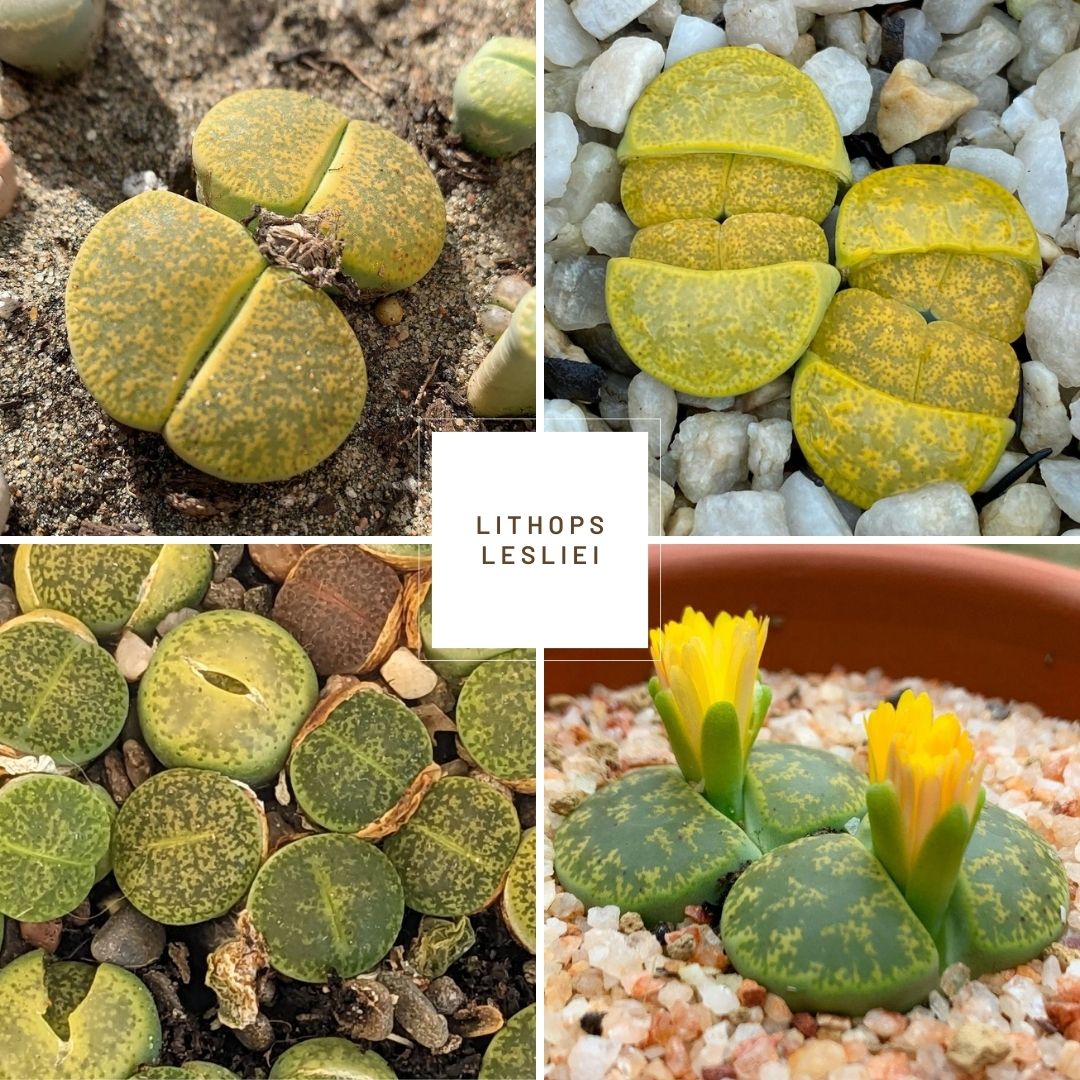
Photo Credits: [1], [2], [3], [4]
Lithops karasmontana
Visible features: Brownish red to bright red
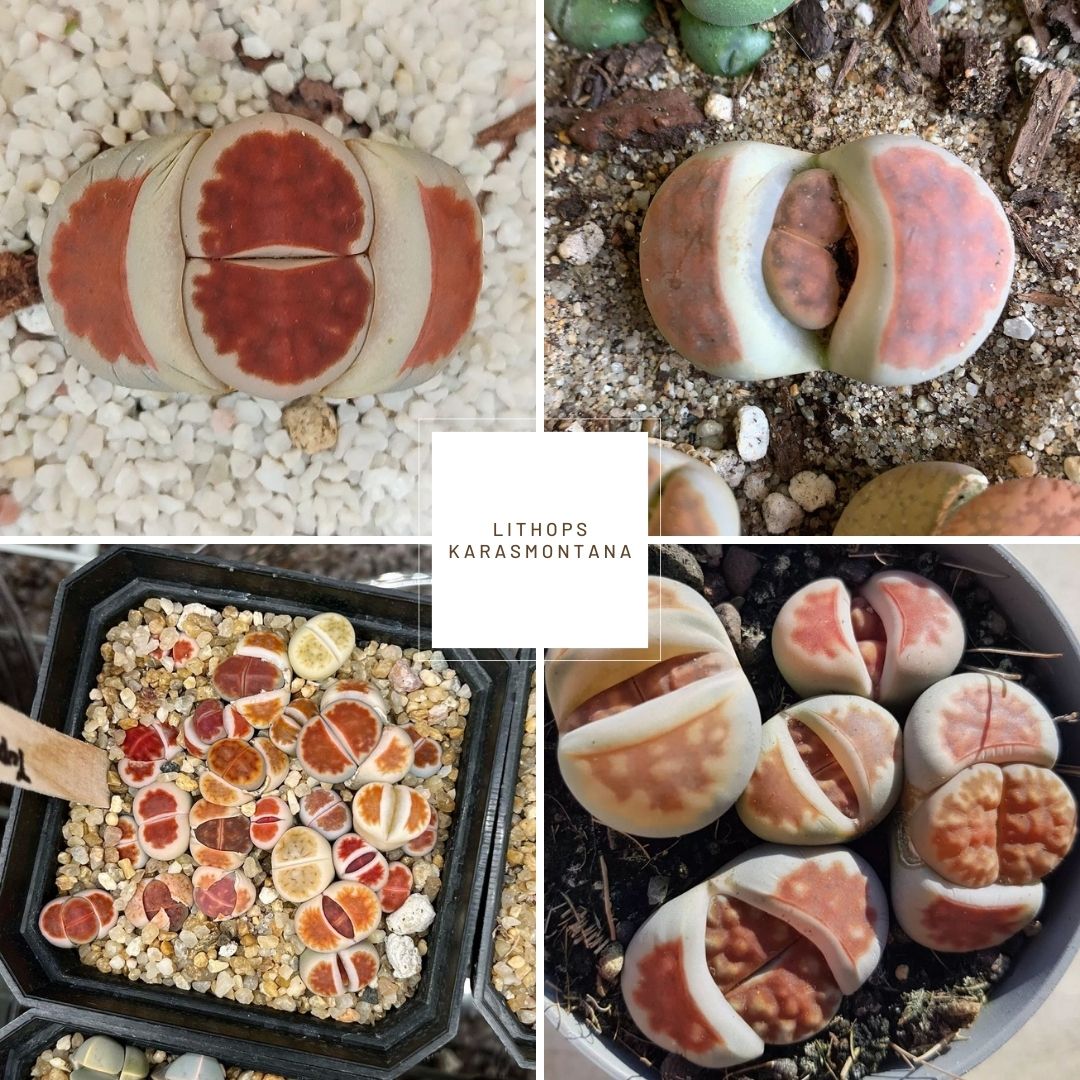
Photo Credits: [1], [2], [3], [4]
Lithops pseudotruncatella
Visible features: Grey to green in color with branched marbling on the top.

Photo Credits: [1], [2], [3], [4]
Lithops salicola
Visible features: Two coupled leaves, divided by a fissure through which the flowers appear. It is cylindrical or conical with a flat surface and green-gray coloration. The flowers are white and very small.

Photo Credits: [1], [2], [3], [4]
Lithops helmutii
Visible features: The leaves, which grow in pairs of two, are green and marked with grey patterns. The flowers are golden yellow with a white center.
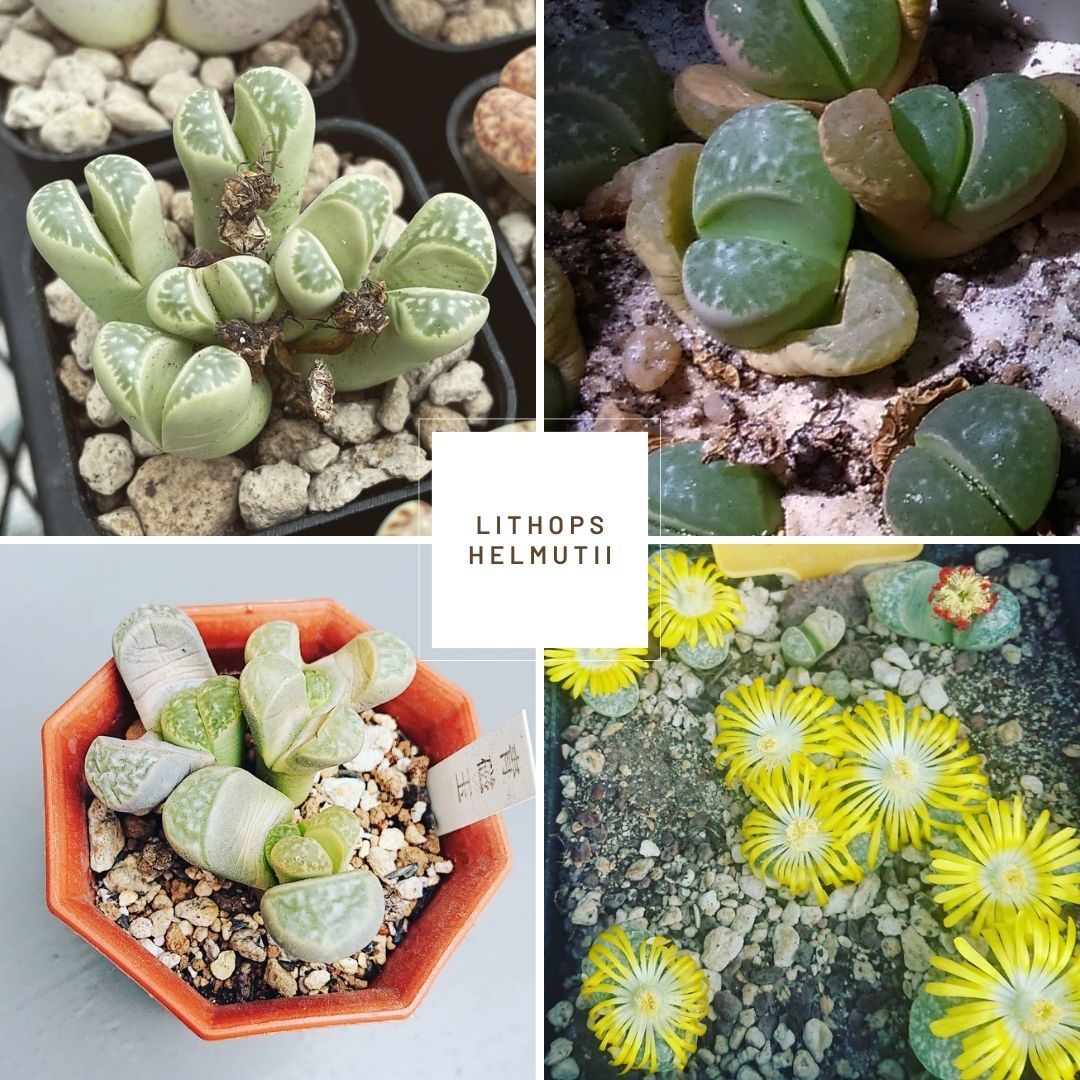
Photo Credits: [1], [2], [3], [4]
Lithops fulviceps
Visible features: Flattened with dark gray-green to blue-green dots, sometimes with yellow, orange-brown, or red markings.
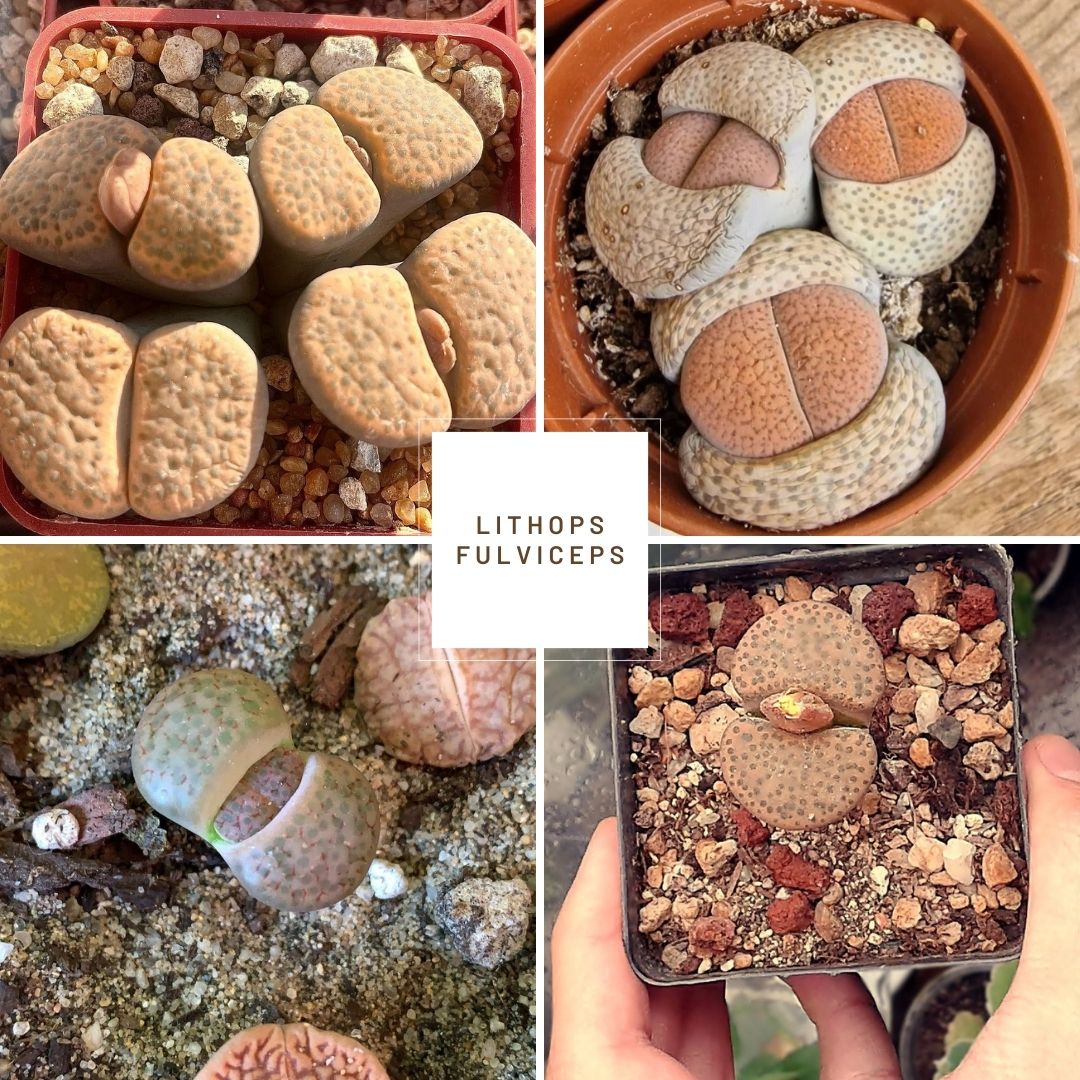
Photo Credits: [1], [2], [3], [4]
Lithops optica
Visible features: The windowed leaves are pink in color with a reddish or purple hue to them.

Photo Credits: [1], [2], [3], [4]
Lithops bromfieldii
Visible features: Dark green with irregular yellow-brown and red to dark brown-red markings.
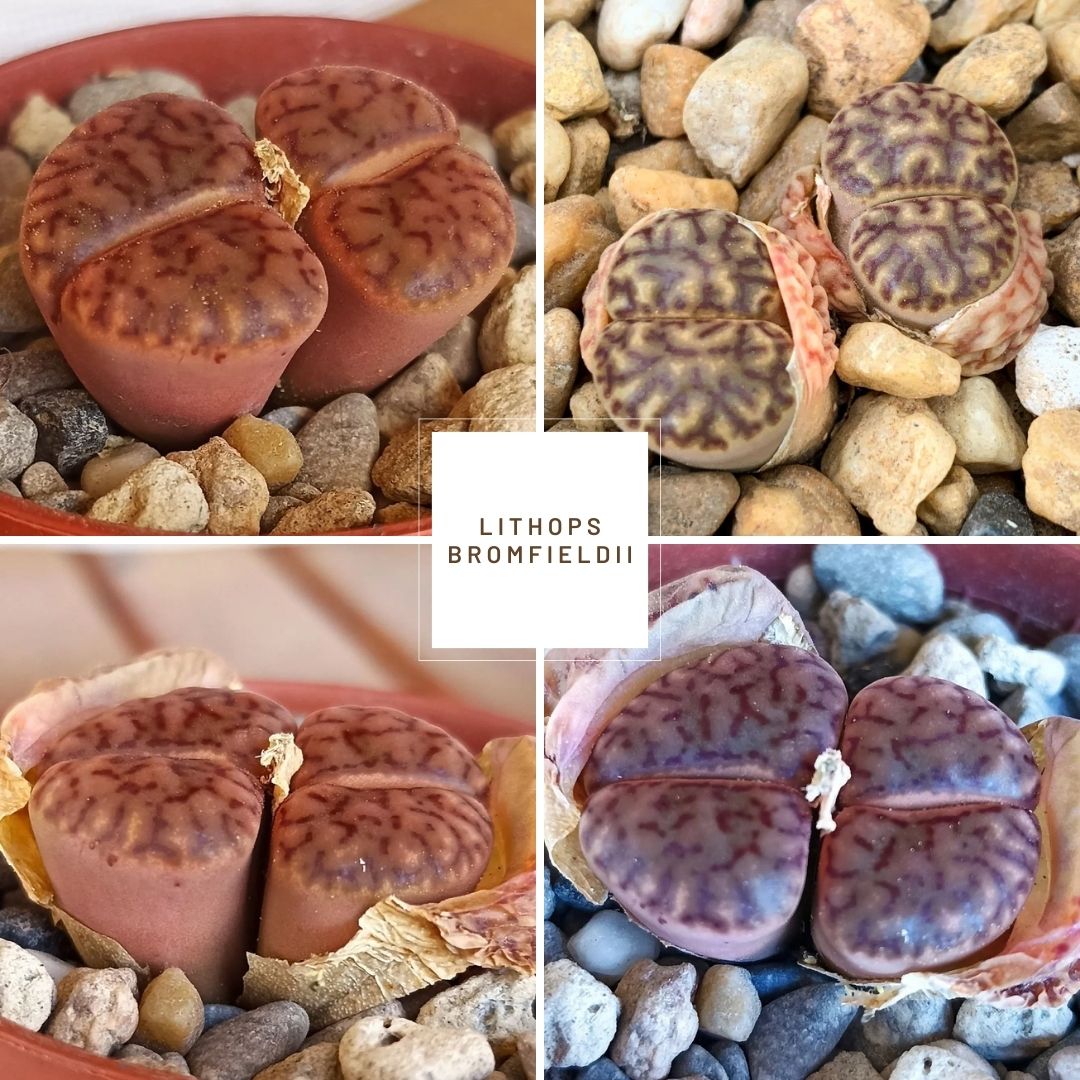
Photo Credits: [1], [2], [3], [4]
Lithops dorotheae
Visible features: Red lines on a yellowish, cream color body (green when grown in more shady conditions).
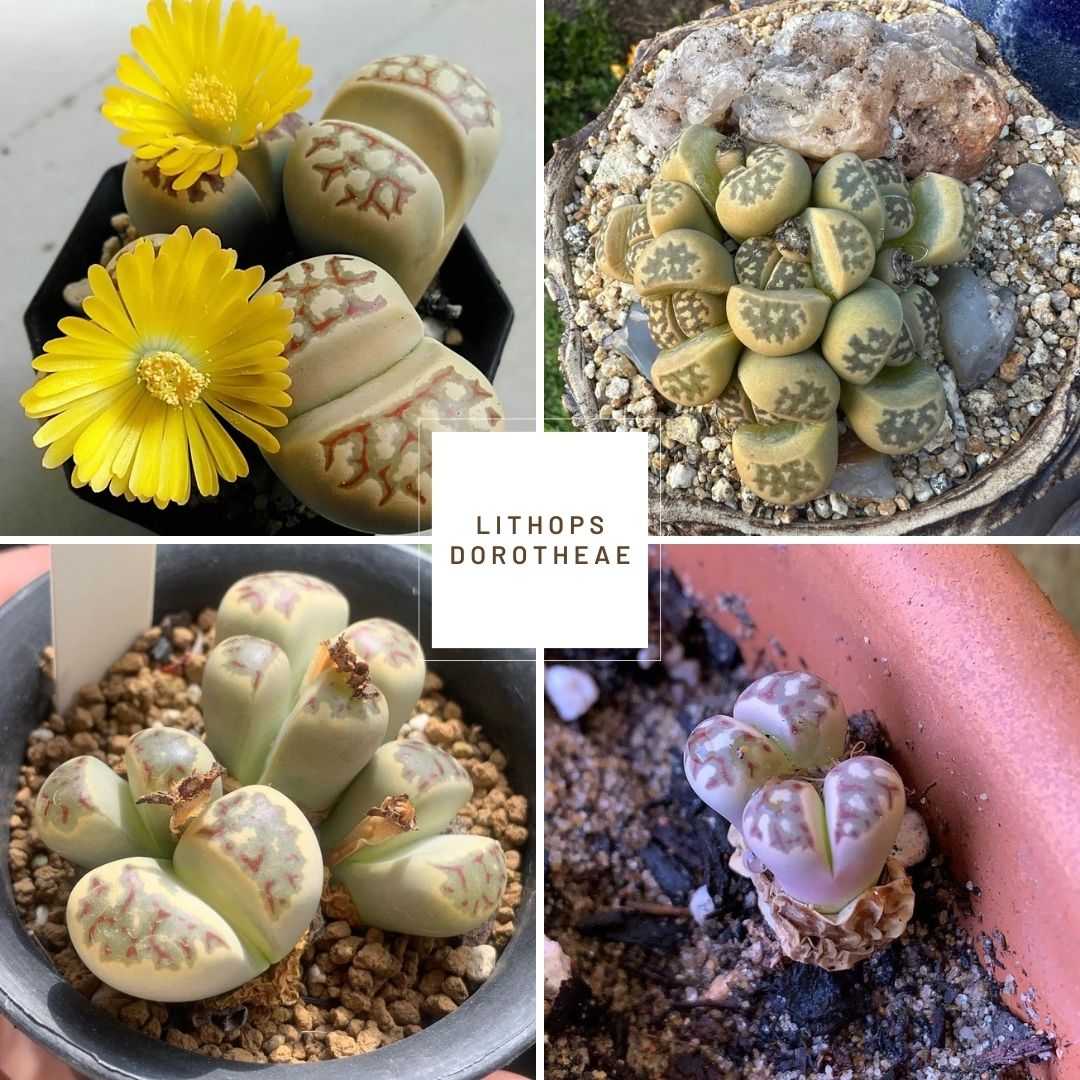
Photo Credits: [1], [2], [3], [4]
Lithops otzeniana
Visible features: The leaves are olive-green to grey, and have a saw-tooth-edged patch of darker color in the center of each leaf. Flowers are yellow with a white center; they sprout from the center of the two leaves on each head.

Photo Credits: [1], [2], [3], [4]
Lithops gracilidelineata
Visible features: The leaves are white, light colored and have a small, fine-lined pattern on top of them usually in brown, and of a random pattern.

Photo Credits: [1], [2], [3], [4]
Lithops villetii
Visible features: Thick, light grey leaves with hints of green, yellow, or brown; sometimes clumped in pairs with varying color spots. White, daisy-like flowers, varying shades.
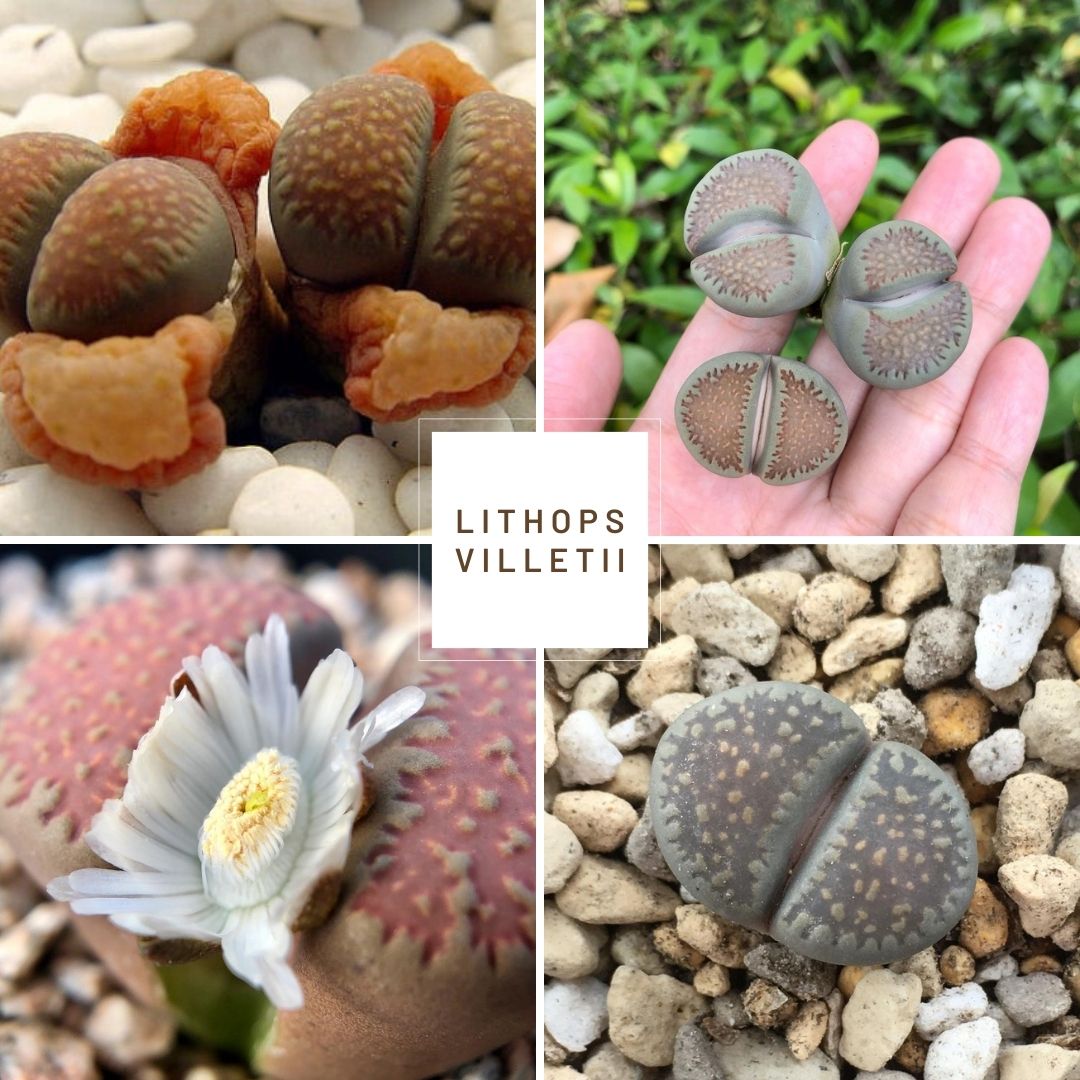
Photo Credits: [1], [2], [3], [4]
Lithops meyeri
Visible features: Ruby red
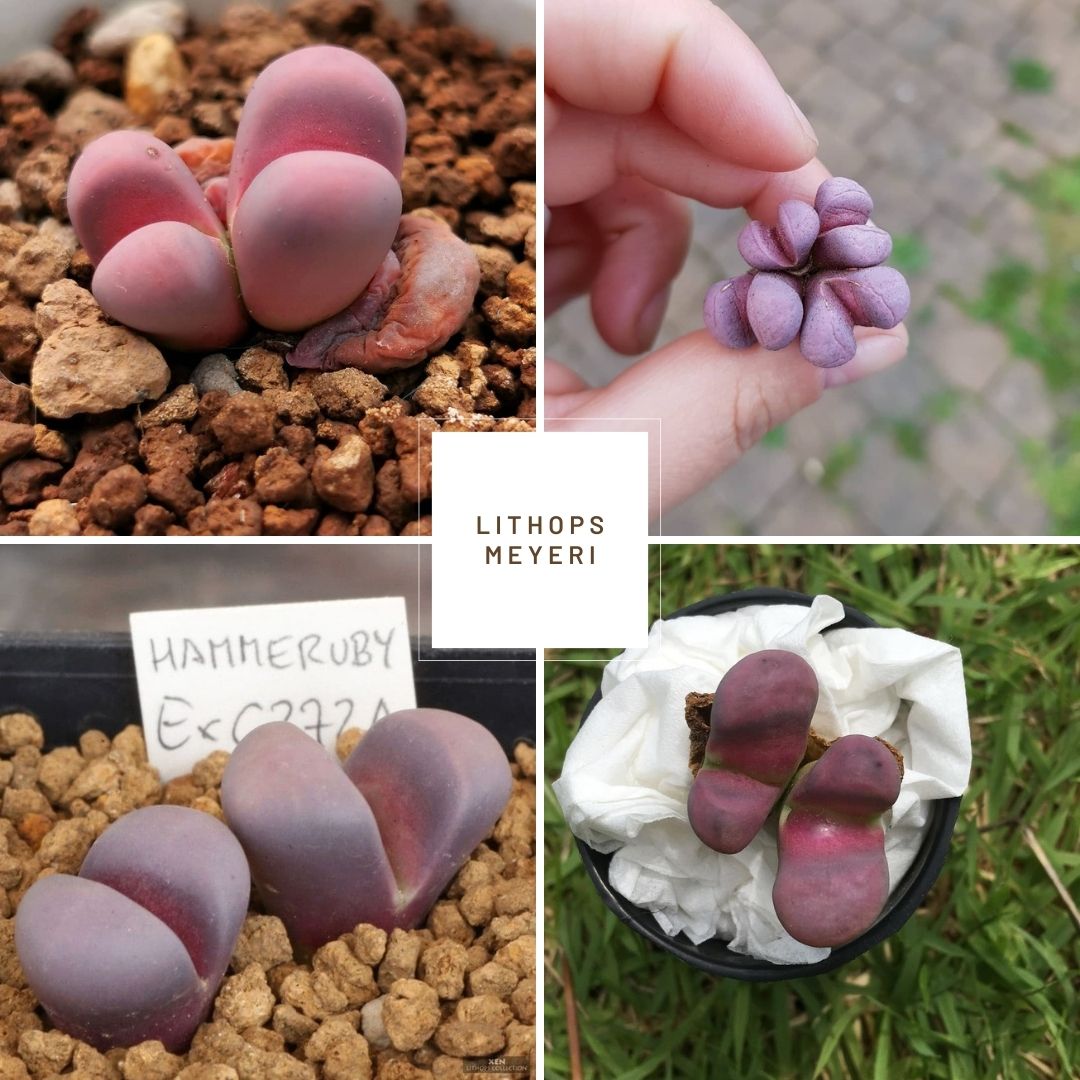
Photo Credits: [1], [2], [3], [4]
Lithops werneri
Visible features: Light grey or greenish grey leaves with dark greenish brown lines and small pellucid dots.
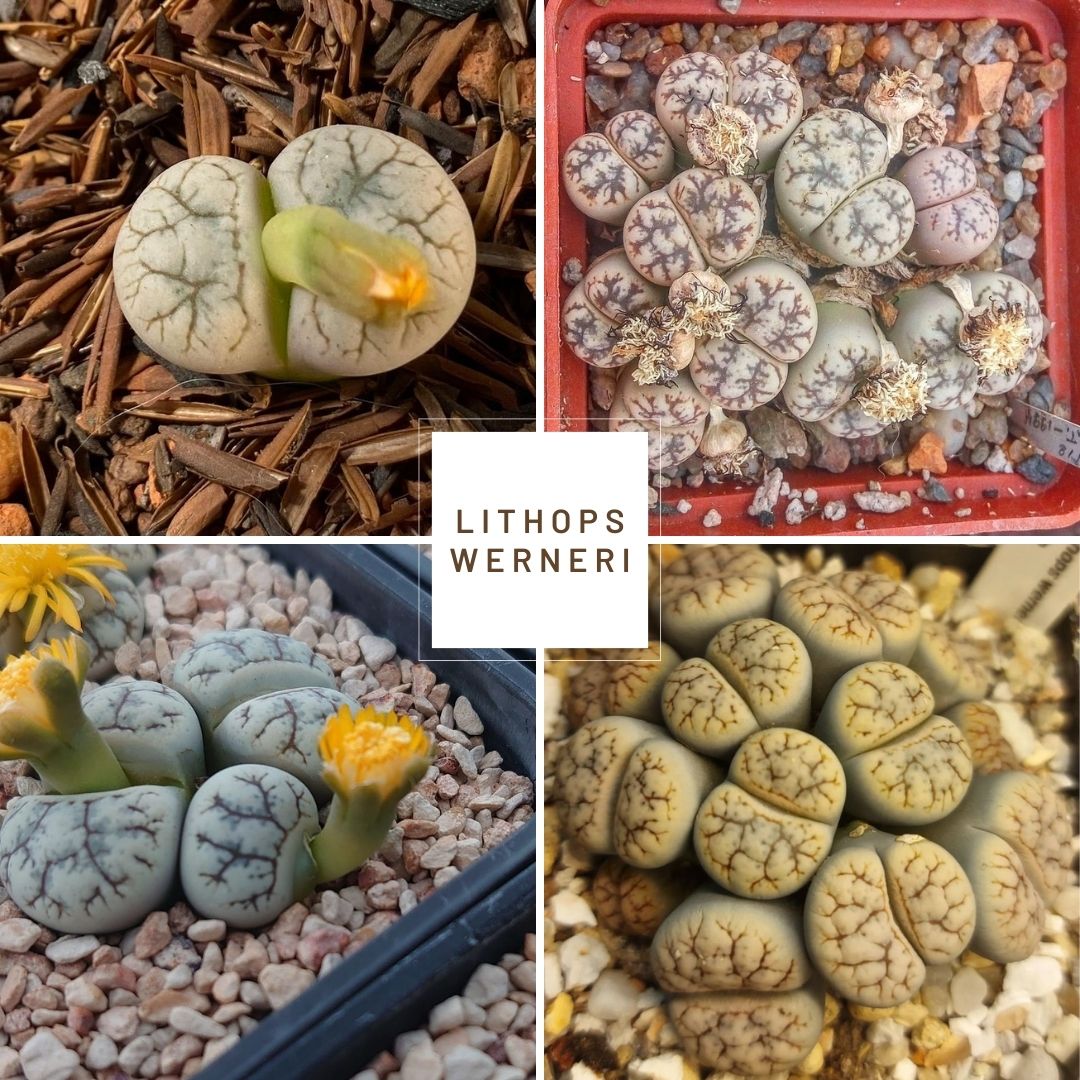
Photo Credits: [1], [2], [3], [4]
Lithops divergens
Visible features: Leaves: Light and dark gray with hints of green. Flowers: Yellow, larger than leaves.
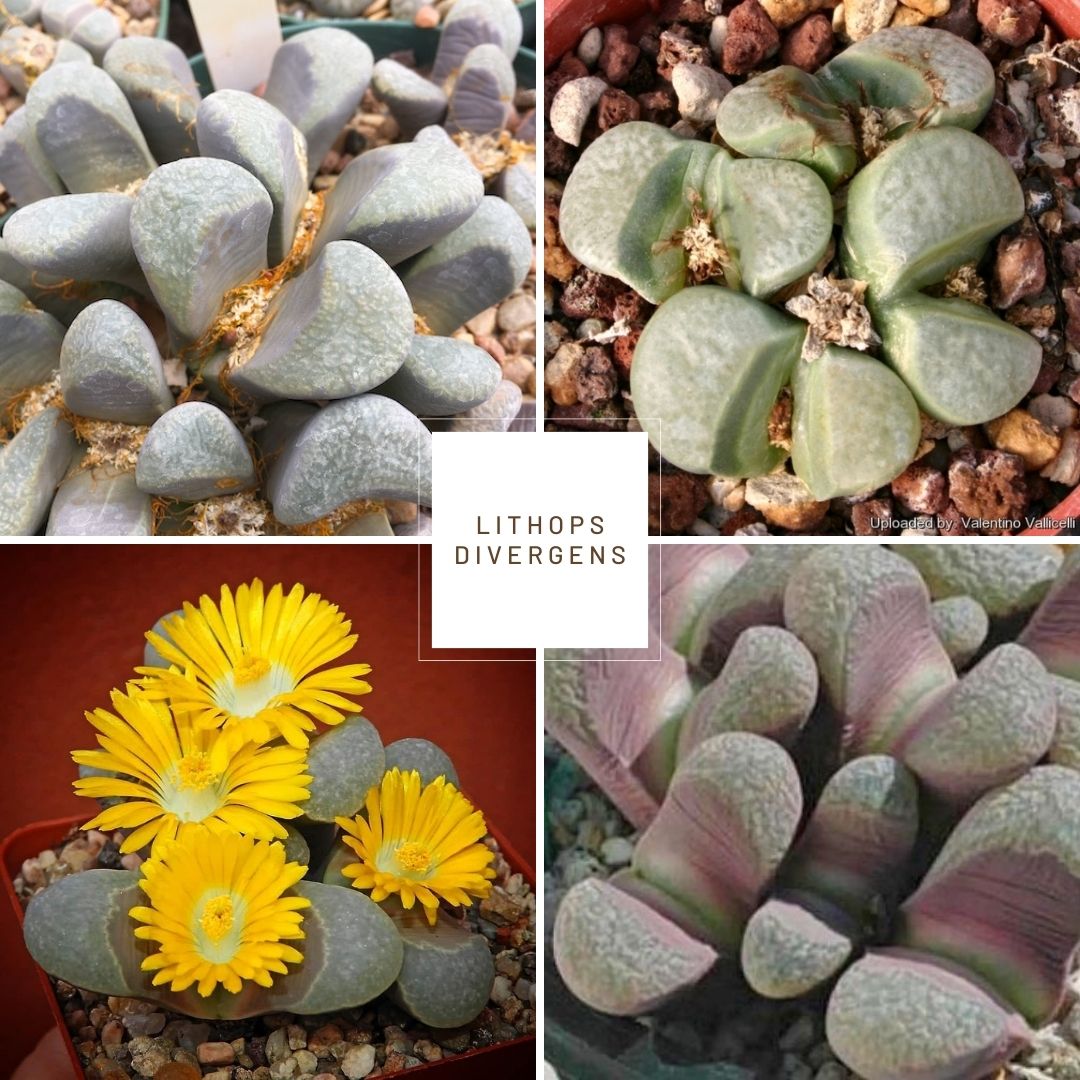
Photo Credits: [1], [2], [3], [4]
Lithops localis (Lithops terricolor)
Visible features: The numerous dots (small windows) are very specific ranging in colour from dark grey through browns to purple.
Note: Lithops localis is also called Lithops terricolor.

Photo Credits: [1], [2], [3], [4]
Lithops verruculosa (Lithops inae)
Visible features: Small shiny red verruculae or pimples on the face.
Note: Lithops verruculosa is also called Lithops inae. The Chinese name is 血点朝贡.
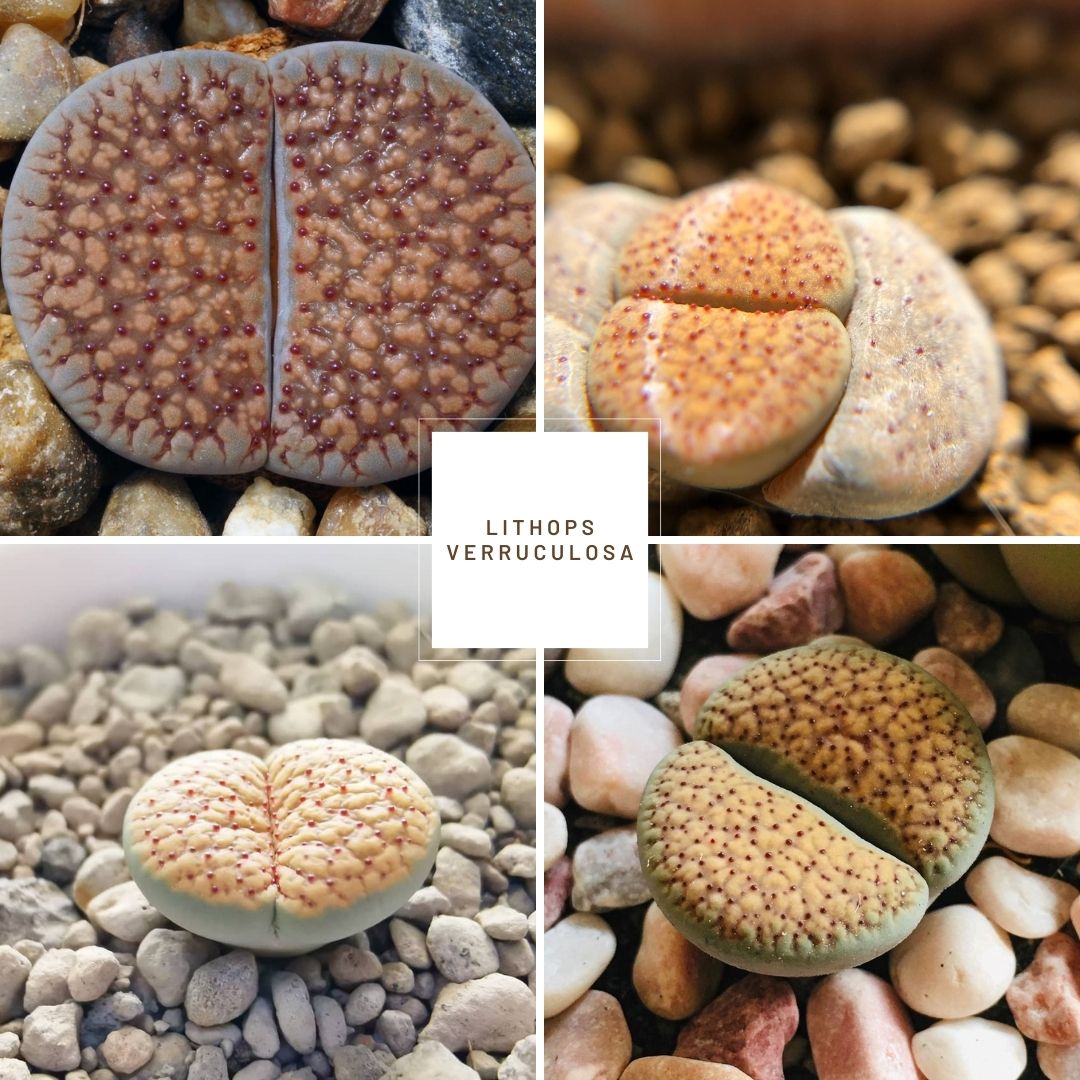
Photo Credits: [1], [2], [3], [4]
Lithops hookeri
Visible features: Red/brown, rusty colours. Yellow flowers.
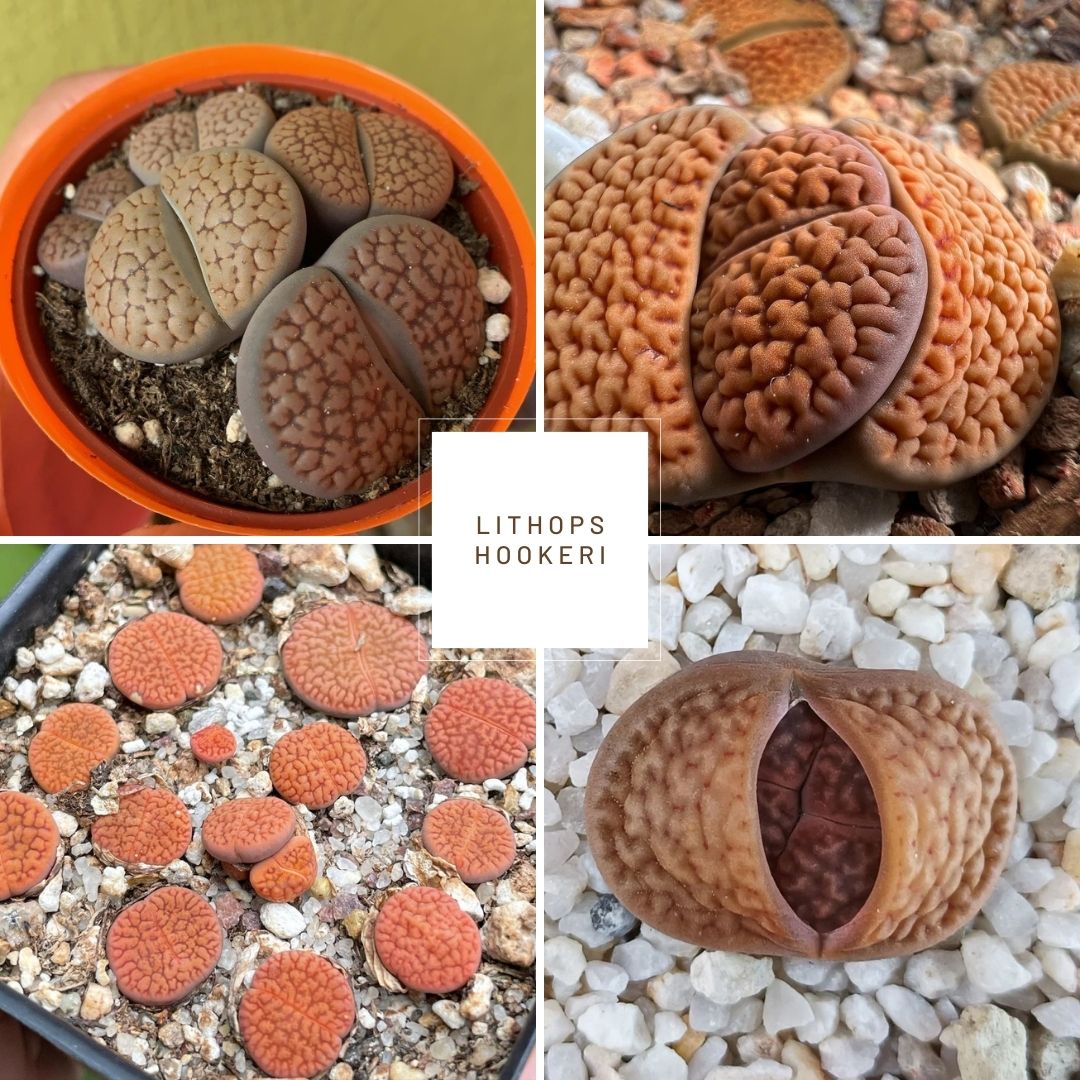
Photo Credits: [1], [2], [3], [4]
Lithops coleorum
Visible features: Pale creamy brown with pink or green and distinctive branched markings.

Photo Credits: [1], [2], [3], [4]
I also created an identification guide for Conophytum. If you are also interested in Conophytum, a succulent that is similar to Lithops, check out this guide for Conophytum.


